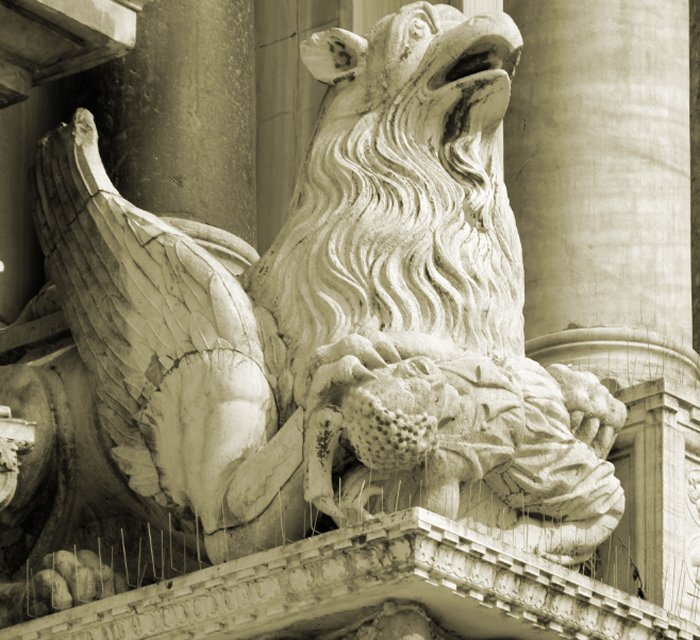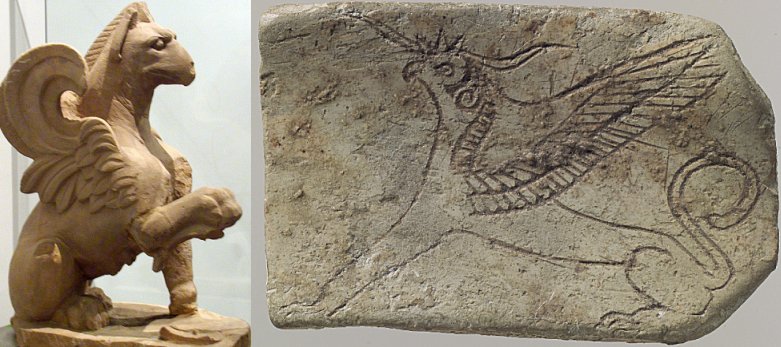Griffins Were Mythical Gold-Guarding Hybrid Creatures Known For At Least 5,000 Years
A. Sutherland - AncientPages.com - If you were to ask a random passerby on the street what the most fantastic creatures are, they would undoubtedly say - griffin, among others.
At least five thousand years old, a mythical hybrid animal known as 'griffin' had the body of a lion and head, sharp claws, and snow-white or golden wings of the eagle.
A statue of a griffin on the Basilica di S. Marco. source
These magical beings symbolized power over heaven and earth, vigilance, strength, and pride. They became an attribute of the Nemesis goddess of retribution, and she was often depicted in a chariot drawn by griffins. This creature used to turn her wheel of fortune. It is one of the oldest magical creatures, which today remains a powerful protector of modern civil institutions such as banks, car plants, and breweries in many countries. It is used in heraldry and appears widely as school sports team mascots and various insignia.
Intelligence, strength, and majesty of the lion that was long ago proclaimed "King of the Beasts" and the superiority of the eagle, the "King of the Air," are combined in the mysterious griffin creature.
"In Sumerian myth, the griffin is the mount of the weather god, Iskur, where it is depicted vomiting forth streams of water or lightning from its mouth upon the parched land. In Assyrian art, the griffin is frequently shown venerating and protecting the Tree of Life, as well as flanking divine figures to assist the check of evil…" 1
Tradition Has It Griffins Were Born In Ancient East
They appeared in ancient Assyria and soon became known almost everywhere, from China to the Himalayas, Persia to Egypt. During the Fifth Dynasty, the Pharaoh himself was depicted as a griffin, successfully fighting the enemy, and this representation symbolized the power of the ruler.
In Egyptian mythology, the griffin is a lion (king) and a falcon, a symbol of the god Horus. We can trace Egyptian influence to the Minoan culture, which gave the griffin creature the qualities of a great warrior.
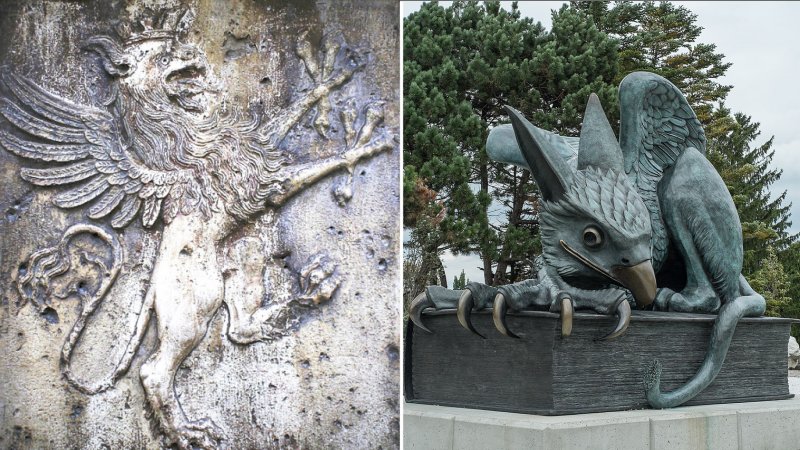 Left: Griffin segreant wearing the mural crown of Perugia, 13th century, source; Right: The Gryphon is the emblem and mascot of the University of Guelph, source
Left: Griffin segreant wearing the mural crown of Perugia, 13th century, source; Right: The Gryphon is the emblem and mascot of the University of Guelph, source
The griffin became a popular decorative motif in the ancient Middle East and Mediterranean region. The applied tapestries frequently used a griffin motif, as did goldsmiths in their art. This hybrid appears in animated films, fantasy novels, and computer games.
Representations of griffin-like hybrids with four legs and a beaked head appeared in Iran's ancient art since the late 2nd millennium BC. In Iranian mythology, the griffin is called Shirdal, which means "Lion-Eagle," and was displayed on old cylinder seals from Susa as early as 3000 BC. Shirdals also are common motifs in the art of Luristan, the North and North West region of Iran in the Iron Age, and Achaemenid art.
Depictions of griffin-type creatures dated about 1950–1550 BC accompanied people in the Levant, Syria, and Anatolia in the Middle Bronze Age.
Early depictions of griffin-types in ancient Greek art date back to the 15th century BC; a good example can be frescos in the Throne Room of the Bronze Age Palace of Knossos.
Griffins In Greece Were Bearers Of The Soul
In the 7th century BC, the ancient Greeks made the first contact with the nomadic people of Central Asia. They also encountered some most fascinating creatures like griffins.
Left: Saqqara, Alexandria National Museum; Right: Furniture plaque: incised griffin, ca. 18th century BC Old Assyrian Trading Colony. Source
In the Scythian myths and legends recounted in Greek and Roman texts, griffins were associated with gold, and so were the mysterious Arimaspians.
The existence of griffins is mentioned in the first literary work, "Arimaspea," by the Greek Aristeas of Proconnesus in 675 BC.
We also encounter them in the lore of ancient Greece and art, as the artists adopted them to decorate vases, seals, mosaics, lyres, gems, coins, and reliefs, but they appear primarily to have been carved upon tombs to guard the dead and to act as bearers of the soul.
The representations of griffins were also common in Egyptian and Persian art, and their impressive, powerful statues decorated Persian palaces.
The griffins were extremely strong and dangerous. They inhabited desert areas, including which China and Mongolia and the regions of the Altai Mountains, the Tien Shan, and the Gobi desert. According to Greek myths, they guarded Apollo's treasure in the Scythian desert and protected him from the legendary Hyperborean tribe of the far north that inhabited the area.
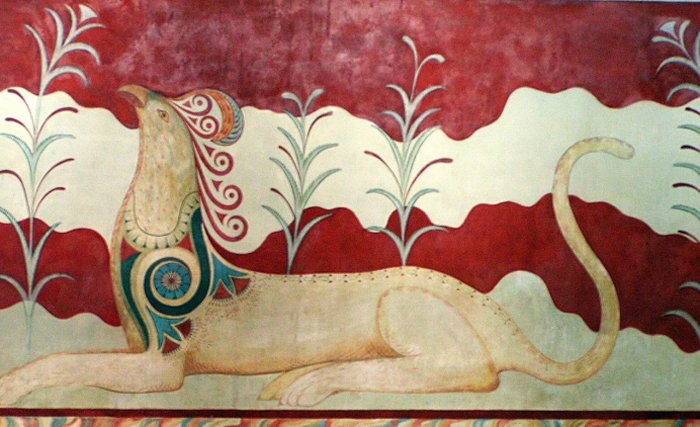 Knossos fresco in throne palace. source
Knossos fresco in throne palace. source
"In the 5th century BC, the Greek writer Herodotus related a story about a one-eyed people known as the Arimaspians who wrested their immense wealth of gold from griffins. He learned this tale from a mysterious traveler, Aristeas of Proconnesus, who told how the griffins guard the gold of the northern lands of Scythia. 1
The same myths tell these divine creatures also guarded the gold of the Hyperboreans of the far north and used to pull the chariot of Apollo and Zeus himself and the goddess of vengeance, Nemesis.
Griffin And Christianity
At first, this mythical animal was identified with evil and even with the Antichrist himself. Depicted as a satanic figure, it had surprisingly very easy to entangle human souls. Over time, however, the griffins' negative symbolism changed and symbolized two aspects of Jesus Christ's dual nature- the divine and the human.
As the last scholar of the ancient world, Isidore of Seville (570-636) wrote in "Etymology":
"Christ is a lion, for he reigns and has power; he is an eagle, for after the resurrection he ascends to heaven."
Ancient people considered the griffin to be a symbol and protector of divine power and, therefore, the king of all creatures, which was a fierce opponent of serpents (snakes) and basilisks, both of which were considered the personification of satanic demons.
Updated on August 25, 2022
Written by – A. Sutherland - AncientPages.com Senior Staff Writer
Copyright © AncientPages.com All rights reserved. This material may not be published, broadcast, rewritten or redistributed in whole or part without the express written permission of AncientPages.com
Expand for referencesReferences:
Eberhart George M. Mysterious Creatures: A Guide to Cryptozoology - Volume 1
1. Matthews, J., Matthews, C. The Element Encyclopedia of Magical Creatures
More From Ancient Pages
-
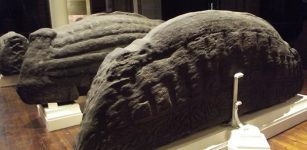 The Govan Stones – Treasures From The Viking Era In Britain
Featured Stories | Dec 27, 2015
The Govan Stones – Treasures From The Viking Era In Britain
Featured Stories | Dec 27, 2015 -
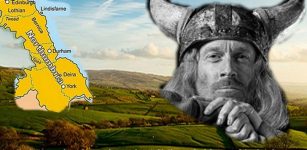 Famous Viking Warrior Eric “Bloodaxe” Haraldsson: King Of Norway
Featured Stories | Sep 29, 2016
Famous Viking Warrior Eric “Bloodaxe” Haraldsson: King Of Norway
Featured Stories | Sep 29, 2016 -
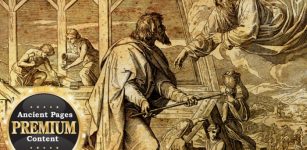 Mystery Of Biblical Noah’s Strange Connection With Red-Skinned Giants And The Watchers – Celestial Secrets – Part 2
Biblical Mysteries | Jan 28, 2021
Mystery Of Biblical Noah’s Strange Connection With Red-Skinned Giants And The Watchers – Celestial Secrets – Part 2
Biblical Mysteries | Jan 28, 2021 -
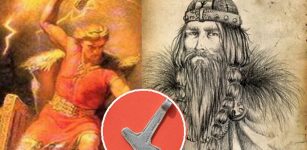 Why Did Christian Viking King Harald Bluetooth Carry A Hammer Of Thor Amulet?
Artifacts | Apr 20, 2018
Why Did Christian Viking King Harald Bluetooth Carry A Hammer Of Thor Amulet?
Artifacts | Apr 20, 2018 -
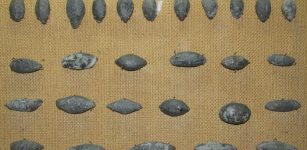 On This Day In History: Battle Of Lugdunum Was Fought – On Feb 19, 197
News | Feb 19, 2017
On This Day In History: Battle Of Lugdunum Was Fought – On Feb 19, 197
News | Feb 19, 2017 -
 Stone Homes Of Europe’s First Megalithic Builders Discovered
Archaeology | Feb 22, 2023
Stone Homes Of Europe’s First Megalithic Builders Discovered
Archaeology | Feb 22, 2023 -
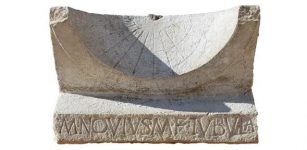 Rare 2,000-Year-Old Intact Sundial With Inscription Discovered In Italy
Archaeology | Nov 9, 2017
Rare 2,000-Year-Old Intact Sundial With Inscription Discovered In Italy
Archaeology | Nov 9, 2017 -
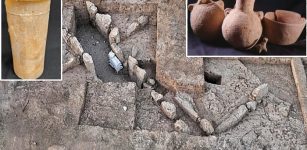 Ancient 5,500-Year-Old Gate Was Discovered Recently At Tell Erani, Near The Kiryat Gat Industrial Zone, Israel
Archaeology | Aug 17, 2023
Ancient 5,500-Year-Old Gate Was Discovered Recently At Tell Erani, Near The Kiryat Gat Industrial Zone, Israel
Archaeology | Aug 17, 2023 -
 ‘Curious’ Creature With No Anus Is Not Earliest Human Ancestor – Relieved Scientists Discover
Archaeology | Aug 18, 2022
‘Curious’ Creature With No Anus Is Not Earliest Human Ancestor – Relieved Scientists Discover
Archaeology | Aug 18, 2022 -
 Are Priceless Ancient Gold Tablets Of The Serpent People Hidden Underground In Los Angeles?
Artifacts | May 24, 2014
Are Priceless Ancient Gold Tablets Of The Serpent People Hidden Underground In Los Angeles?
Artifacts | May 24, 2014 -
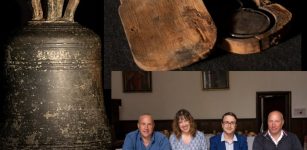 Wreck Of Historic Royal Ship ‘Gloucester’ Discovered Off The English Coast
Archaeology | Jun 10, 2022
Wreck Of Historic Royal Ship ‘Gloucester’ Discovered Off The English Coast
Archaeology | Jun 10, 2022 -
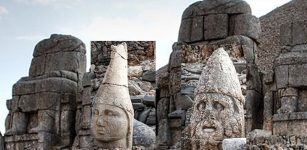 Mount Nemrut: ‘Throne Of The Gods’ – Mysterious Royal Tomb Surrounded By Gigantic Sculptures
Civilizations | Nov 16, 2018
Mount Nemrut: ‘Throne Of The Gods’ – Mysterious Royal Tomb Surrounded By Gigantic Sculptures
Civilizations | Nov 16, 2018 -
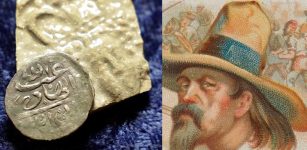 Can This Ancient Coin Solve The Mysterious Disappearance Of Pirate Henry Every?
Archaeology | Apr 1, 2021
Can This Ancient Coin Solve The Mysterious Disappearance Of Pirate Henry Every?
Archaeology | Apr 1, 2021 -
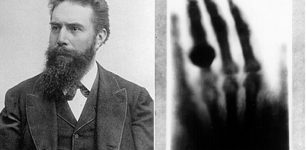 On This Day In History: Discovery Of X-Rays By Wilhelm Roentgen Reported – On Jan 5, 1896
News | Jan 5, 2017
On This Day In History: Discovery Of X-Rays By Wilhelm Roentgen Reported – On Jan 5, 1896
News | Jan 5, 2017 -
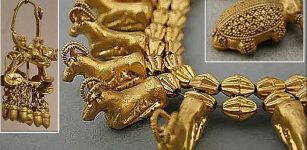 Gold Treasures From The Land Of Ancient Colchian Culture In Georgia
Featured Stories | Dec 19, 2023
Gold Treasures From The Land Of Ancient Colchian Culture In Georgia
Featured Stories | Dec 19, 2023 -
 Iron Age Site Tell Deir ‘Alla (“Mound Of The High Monastery”) Flourished 400 Years In Central Jordan Valley
Archaeology | Jul 25, 2022
Iron Age Site Tell Deir ‘Alla (“Mound Of The High Monastery”) Flourished 400 Years In Central Jordan Valley
Archaeology | Jul 25, 2022 -
 On This Day In History: The Battle Of Actium – Birth Of The Roman Empire – Sep 2, 31 BC
News | Sep 2, 2015
On This Day In History: The Battle Of Actium – Birth Of The Roman Empire – Sep 2, 31 BC
News | Sep 2, 2015 -
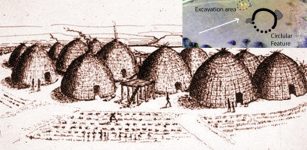 Large Earthwork At Wichita Site In Kansas – Is It Long-Lost Native American City Of Etzanoa?
Archaeology | Sep 4, 2020
Large Earthwork At Wichita Site In Kansas – Is It Long-Lost Native American City Of Etzanoa?
Archaeology | Sep 4, 2020 -
 Spectacular Find: Lost Temple Of Goddess Artemis Has Been Found On Greek Island Of Euboea
Archaeology | Sep 22, 2017
Spectacular Find: Lost Temple Of Goddess Artemis Has Been Found On Greek Island Of Euboea
Archaeology | Sep 22, 2017 -
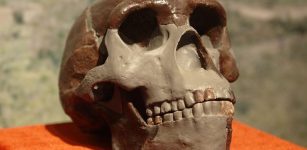 Sinuses Reveal More About The Evolution Of Ancient Humans
Archaeology | Oct 29, 2022
Sinuses Reveal More About The Evolution Of Ancient Humans
Archaeology | Oct 29, 2022

